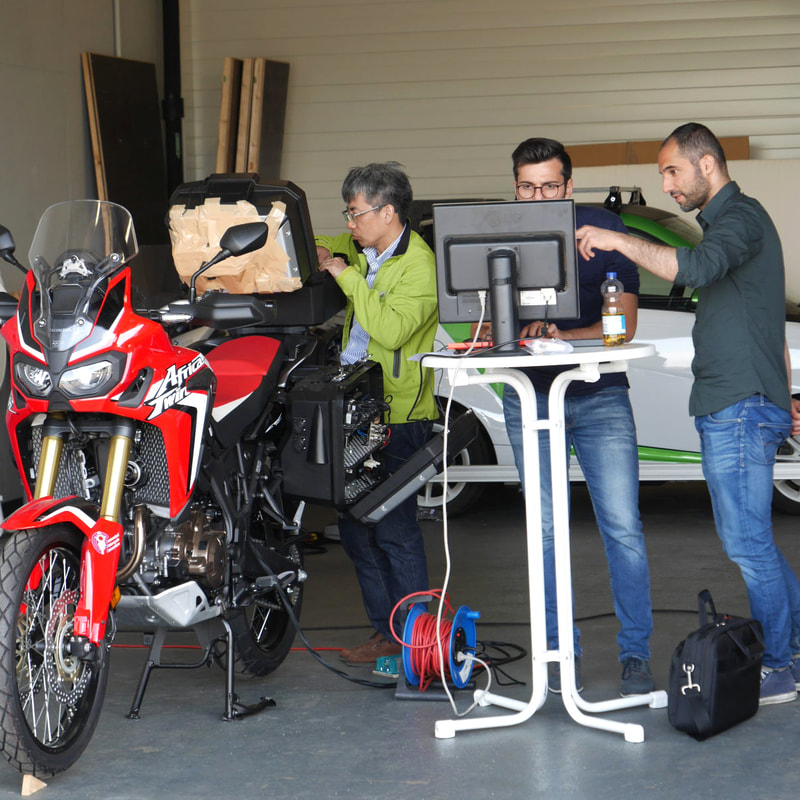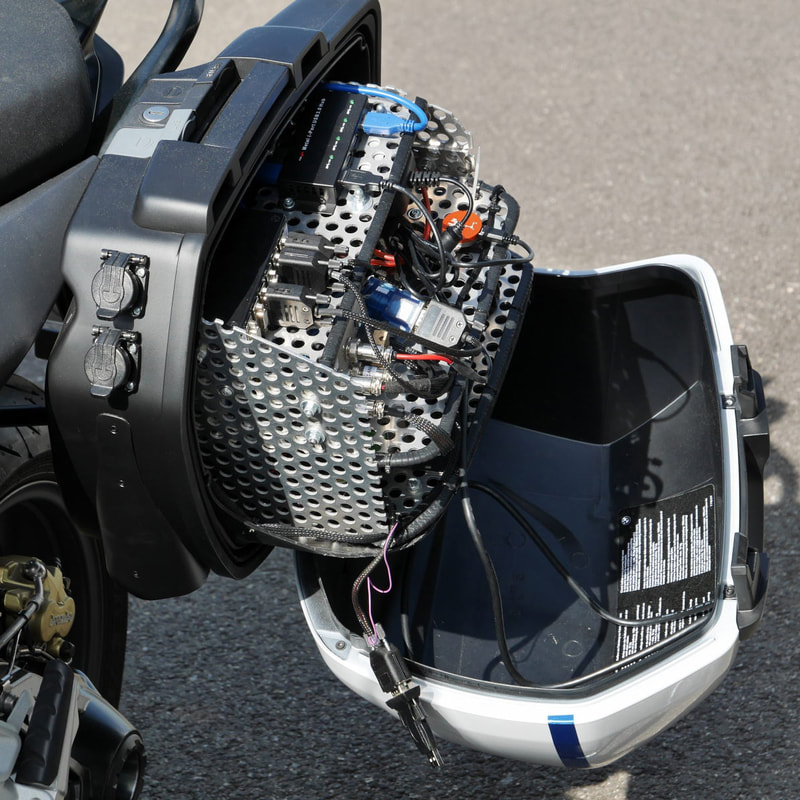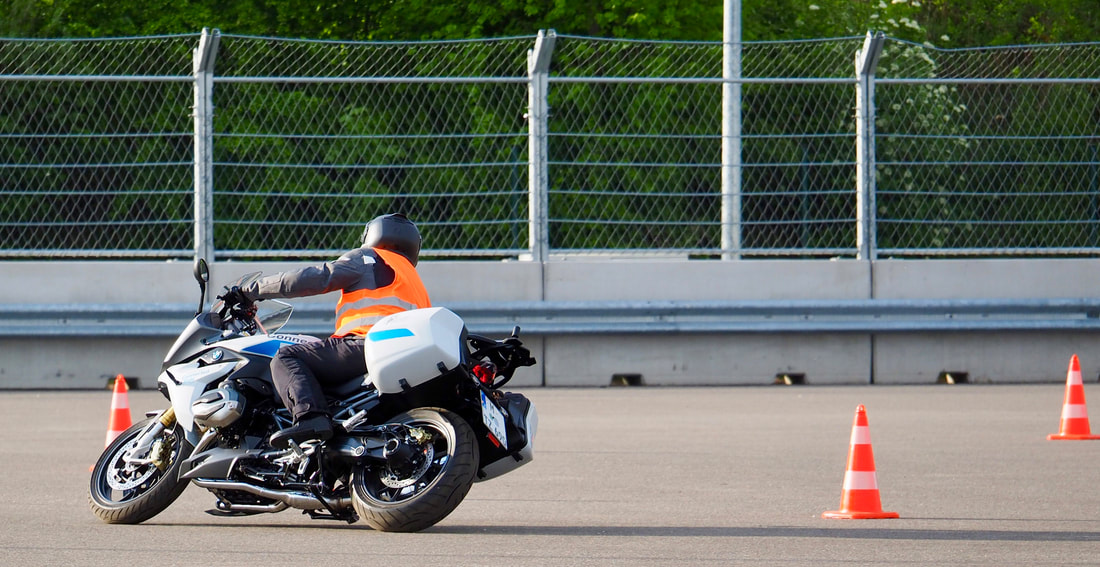|
Real-life tests conducted Motorcycles are usually less than 1 metre wide and their position within their lane is an important information to determine critical situations. In other words, it makes quite a difference if a rider keeps left or right in his lane. The Connected Motorcycle Consortium conducted several real-life tests both on public roads and in confined test environments at Technische Hochschule Ingolstadt (THI). These tests were done with today’s GNSS localisations systems* in order to verify performance of these systems and to deduct CMC requirements for future safety applications on motorcycles. * GNSS stands for Global Navigation Satellite System. Examples of such systems with global coverage are GPS from the U.S.A. and GLONASS from Russia. By 2020, BDS from China and Galileo from the E.U. should be operational as well. Setting up the test units Test outcomes As to be expected, currently used automotive satellite systems do not provide enough accuracy on lane specific positioning. Furthermore, it turned out that the calculation of the motorcycle trajectory under weak satellite signals – the so-called ‘dead reckoning’* - is more demanding compared to cars. * In navigation, “dead reckoning” is the process of calculating the current position by using a previously determined position, or fix, and advancing that position based upon known or estimated speeds over elapsed time and course. Parameters not usable as in case of cars While for cars, steering angle and differential speed of wheels are key information to calculate a trajectory, for motorcycles, both are not available and not really useful. The differential speed of a motorcycle’s front and rear wheel does not indicate any directional change. Moreover, motorcycles do not have steering angles, which would allow calculation of their trajectory, since motorcycles are steered by inertia. Leaning angle, speed and most important centre of gravity are key parameters. Particularly centre of gravity is very difficult to measure, since the rider and his positioning on the bike have a massive influence on it. Common standard needed
Raphael Riebl from THI is convinced: “We still have lots of work to do to solve the ‘dead reckoning’ issue for motorcycles. Furthermore, it is essential, that we do this together in CMC with all manufacturers involved. Only if we can decide on common standards and test methods, we can assure the same dependable level of accuracy in positioning of every motorcycle on the road.” He contemplates: “Moreover, it is understood that only then we can go ahead with actual safety critical applications. So as an important next step we have to define a motorcycle-specific test scenario which includes the requirements for dead reckoning." Comments are closed.
|
Archives
May 2024
|
COPYRIGHT 2024 Connected Motorcycle ConsortiumContact Us |
|




 RSS Feed
RSS Feed